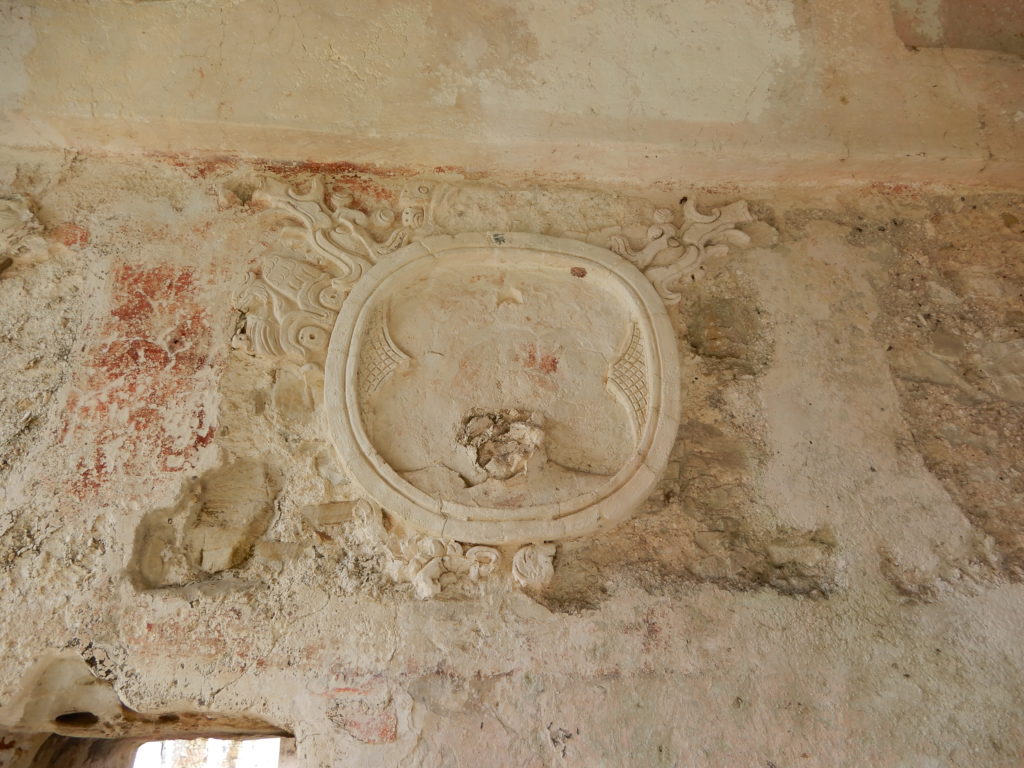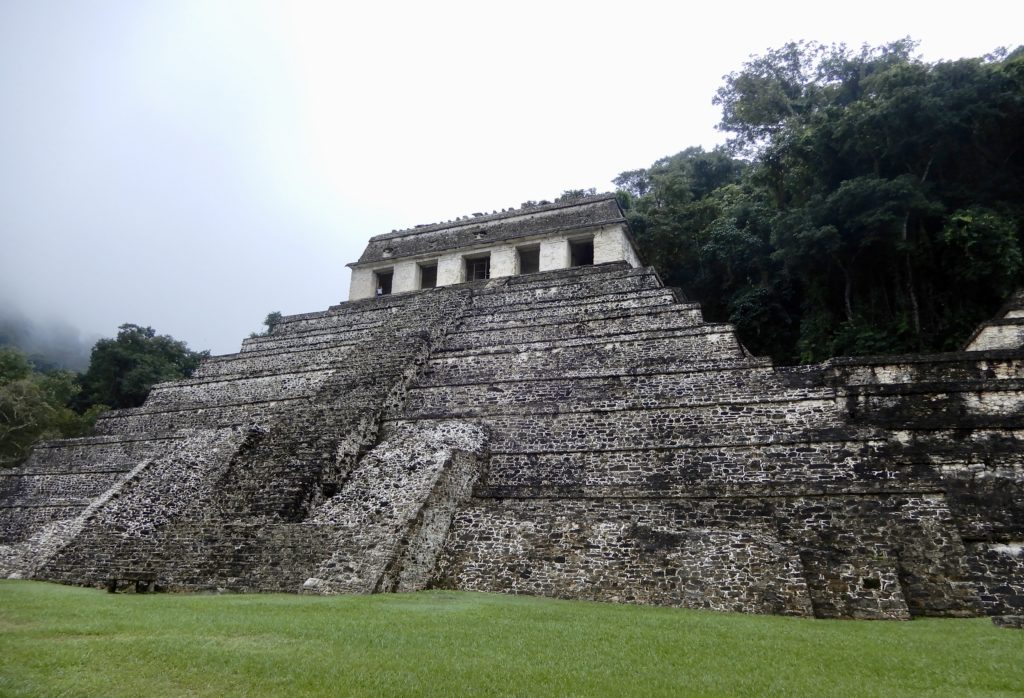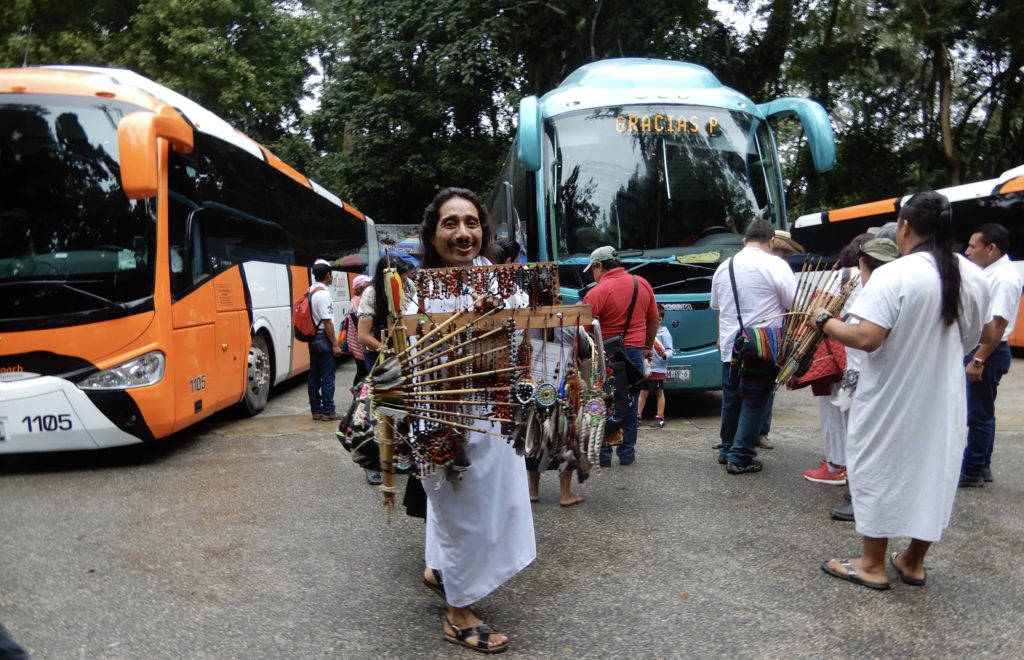A hot, damp, humid morning. The howler monkeys were roaring in the distant trees, but we couldn’t see them. The washing I did the afternoon before was still as wet as when I first hung it out. In fact the weather got worse and started to rain heavily.
Saying goodbye to the Latvians, Carl, Christine and Emma, who had overnighted in the car park with us, we set off for the ruins at Palenque.
A very different drive in the rain through the jungle. Palenque was not far away so we were there quite quickly, despite the topes! On the drive in we passed the two campsites we considered staying at later in the day. It was very touristy with buses and the usual retail stalls lining the entrance and the paths inside the site.
Different to any of the other ruins we have seen so far, in that here the jungle had more or less taken over. It is one of the best examples of Maya ruins in the country and displays information in English as well as in Spanish.
The city came to prominence under the ruler Pakal, around AD 615. He lived to the then incredible age of 80. The magnificent Templo de las Inscripciones was constructed during Pakal’s reign and became his mausoleum. The buildings were characterised by mansard roofs and very fine stucco bas-reliefs.


Pakal’s son, Kan B’alam II, continued Palenque’s expansion and artistic development. He presided over the building of the Groupon de las Cruces temples.
It was during Kan B’alam’s reign that the rival Maya city of Tonina challenged Palenque. We had learned about this while at Tonina the day before. Kan B’alam’s brother and successor was captured and executed in Tonina.
There was a resurgence in the mid AD 700’s, but by AD 900 Palenque was largely abandoned.
This region receives the highest rainfall in Mexico. The ruins were, therefore, soon overgrown by the jungle. The site remained unknown to the western world until 1746, when Maya hunters revealed its existence to a Spanish priest. It was not until 1837, when amateur archeologist, John L Stephens from New York and artist, Frederick Catherwood came, that the site was thoroughly investigated.
Another century passed before Mexican archeologist, Alberto Ruiz Lhuillier, uncovered Pakal’s hidden crypt in 1952.
The site covers some 15 square kilometres and discoveries are still being made, as only a small area has been excavated.
We decided not to visit the museum, as the Latvian family had advised it was disappointing. The significant finds have been taken to the Museum of National Archeology in Mexico City.
We also changed our minds about camping here. Although it had stopped raining it was still incredibly humid and damp and the camping places muddy. We continued on to Catazaja, camping next to a lake. It wasn’t exactly peaceful, although a pleasant, safe location. Barking dogs, howling monkeys and music, but not so sticky and hot.
Views: 36


